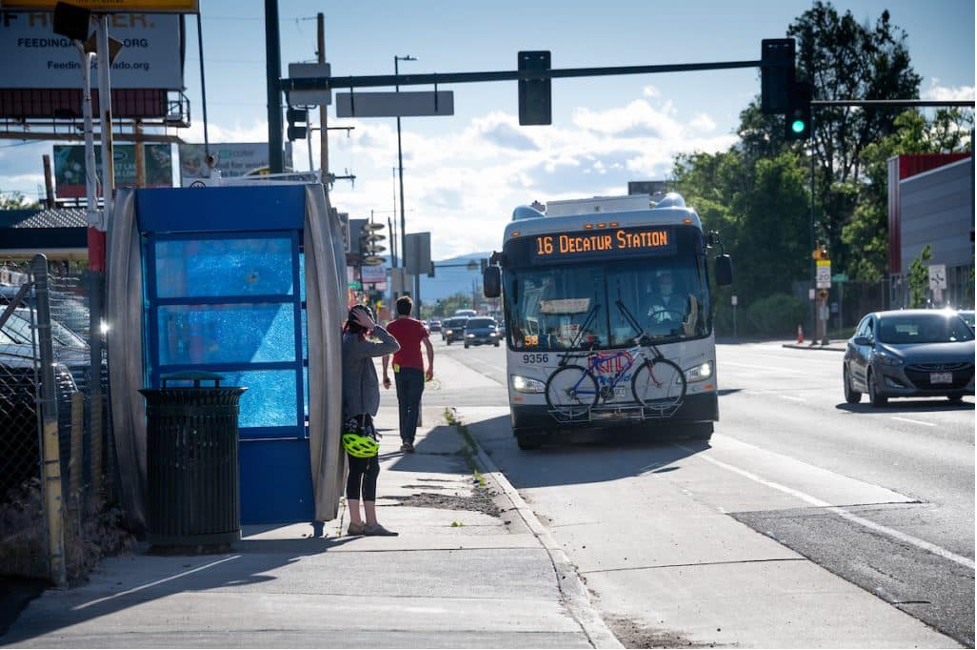By James Brasuell, Planetizen
Across the nation, many state-level elected officials talk about reducing transportation emissions but the agencies they nominally oversee plan and fund automobile infrastructure that increase emissions anyway. (Oregon’s State Highway Department, “ODOT,” shows one of many ways state governments use to cook the books and say one thing while doing another.) Recently, the State of Colorado is instead starting to move toward matching rhetoric with investment. Last year, the state implemented a new statewide rule that rearranges regional capital investment plans to prioritize the transportation modes that most effectively reduce greenhouse gas (GHG) emissions: public transit, walking, and biking.
The new rule has already resulted in real-world changes – or at least, changes to plans, including by the biggest Metropolitan Planning Organization (MPO) in the state. In 2022 the Denver Regional Council of Governments (DRCOG) scrapped its plan to expand Interstate 25 and C-470, and will use the money it saved to fund a suite of new bus rapid transit projects.
While advocates warn that much more work will be necessary to meet the state’s climate goals, Colorado’s GHG rule and subsequent funding decisions provide a blueprint that other states should follow, if they are sincere in fulfilling their pro-climate rhetoric.

